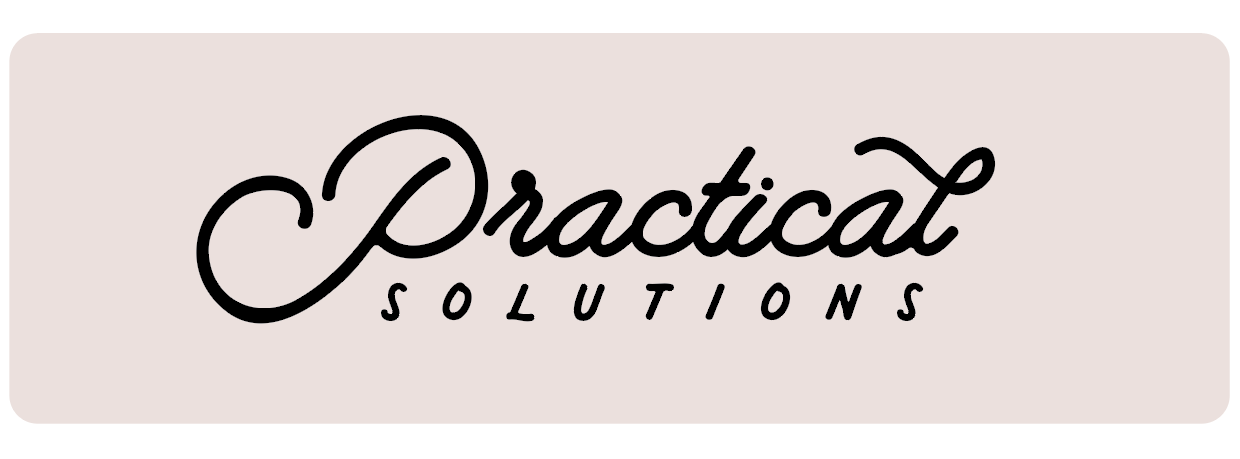PSA #3: Visual Schedules
This week’s Practical Solution in Action (PSA) will continue to support Building Structure and Routines. We have already explored how visual timers teach time management skills, while providing structure and accountability, as well as how interactive calendars can foster stronger executive functions and social emotional regulation. The next tool for building structure and routine in our Practical Solutions Toolbox is the visual schedule.
Schedules are another “no-brainer” when it comes to establishing routines and creating structure, right? But again, it’s how you develop and implement your schedule that makes the difference.
We all have schedules, whether formal or informal, we complete tasks in a certain order throughout the day. Some schedules are very rigid, such as when you sleep train your child and others are more flexible, changing from day to day but still follow a general structure. The rigidity of the schedule gradually releases over time, as our executive functions become more and more developed.
Almost all pediatricians, child psychologists and other child development experts believe that children thrive on repetition and routine. Frameworks for a child’s very first schedule are given to us right at the hospital for eating, sleeping, and diapering. Then the natural progression is to observe our children and adjust their schedules based on their behaviors, pediatrician recommendations and our own parenting philosophies. For about the first 2-3 years of life, our children are relying on us to develop and implement structure that supports a healthy, happy, and engaging lifestyle. Sure, these schedules can differ from family to family, but they all share a need for consistency.
Next, children begin school where the schedule is yet again the heart of how healthy and developmentally appropriate growth is fostered. As mentioned above, schedules begin more rigid in early childhood classrooms, modeling for our youngest students how to develop their executive functions. As our students grow older and reach middle school, the schedule is still the cornerstone of the structure developed but it becomes more flexible allowing students to switch classes and transition throughout the building. Finally, we arrive at a point where the goal is for executive functions to be strong enough to support high school and college students electing classes and creating their own schedules.
Whether we consider ourselves “schedule people” or not, as adults, it is clear that children are “schedule people” and will benefit from as much of an understanding of and role in their evolving schedules as possible. Enter the visual schedule!
As an educator and parent, I can attest to the numerous universal benefits of visual schedules. They are accessible for all ages and at all stages of development. Non-readers benefit from the visual representation of the tasks to be completed, where children learning to read can rely on the visuals as cues. The visuals also provide a deeper meaning to the written tasks, supporting memory and overall understanding (especially when children are involved in developing the schedules and choosing the images).
Visual schedules can be very easily adapted to meet the needs of each learner. There have been many times where I’ve had a few different versions of visual schedules all operating off the same general classroom schedule, all supporting varying levels of executive function. Not only is the amount of scaffolding involved adaptable, but the ways in which you use the schedule with your children can produce even more successful results.
My daughter benefits from a large visual schedule that hangs near the breakfast table and calendar center, where it can be referred to during our morning routine. I’ve found that setting purpose and intention for our day, at the start, allows for her to have a comforted understanding of what to expect and when to expect it. This comforted understanding generates positive feelings around what is expected of her throughout the day, creating a sense of security and ownership.
As one of our youngest learners, my daughter, also benefits from carrying a personal visual schedule around with us. This portable tool cues her memory and supports her understanding of what order the day’s events are occurring in. She also enjoys checking off tasks/events that have been completed to feel a sense of accomplishment and to help her stay visually organized for what is next.
At Practical Solutions, we use Boardmaker to create visual schedules for our families. I’ve become very fond of this incredible program over the years as an educator, however if you have access to crayons and paper, you are well on your way to supporting your child’s executive functions!
We would love to partner with you to create visual schedules and other practical solutions that support routine and structure for your family. Contact us today to get started!




